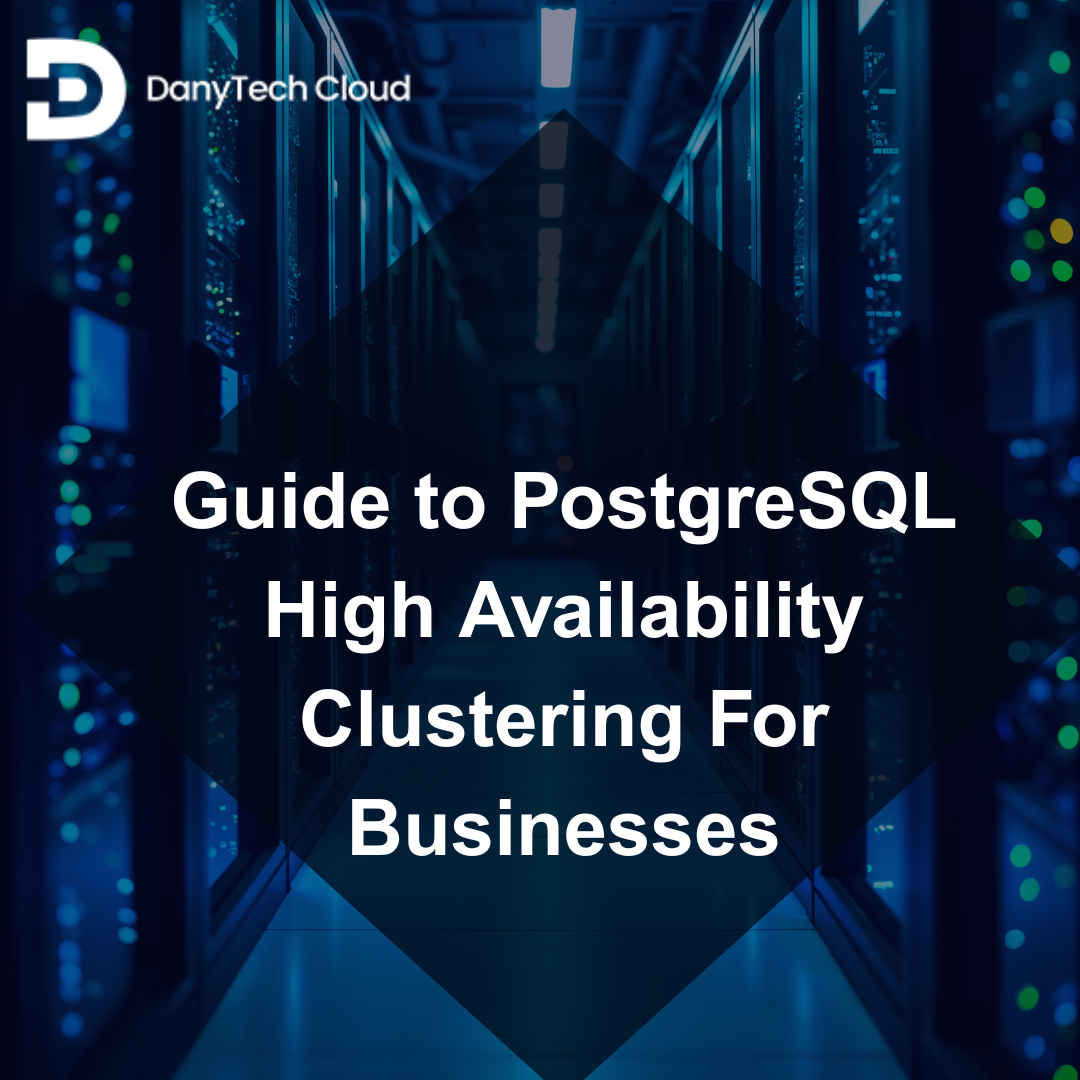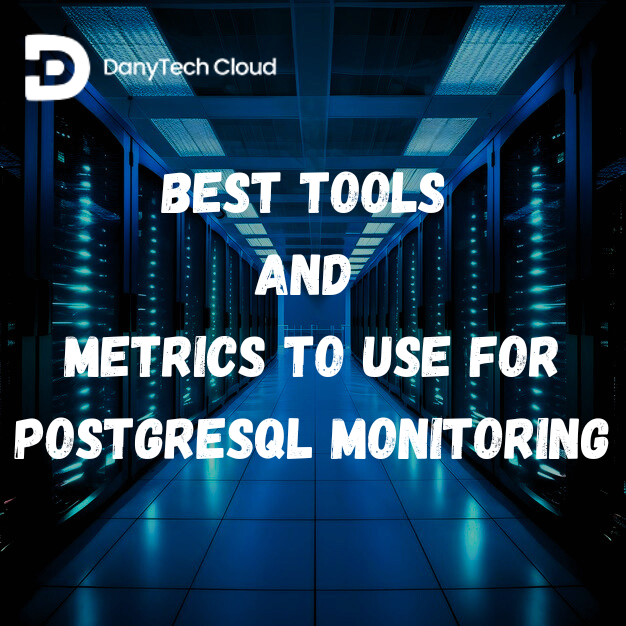PostgreSQL has gained its place as one of the most versatile and reliable open-source databases. Businesses that depend on it for mission-critical apps know the importance of keeping systems always available. Downtime is not only inconvenient, but it can also lead to compliance issues, unsatisfied customers, and data loss. This is where PostgreSQL high availability clustering solutions come into play.
Clustering ensures smooth failover, resilience, and uninterrupted access to data even during server maintenance or failures. In this guide, we will break down clustering in PostgreSQL, its importance, and how it integrates with modern hosting environments.
What Is Database Clustering in the Context of PostgreSQL?
At its core, database clustering involves multiple database servers (nodes) working together as a unified system. Instead of relying on a single server, a PostgreSQL cluster allows data to be synchronized and distributed. It helps when a server failure happens, as it does not disrupt operations.
For PostgreSQL, clustering is not about sorting PostgreSQL data types on multiple machines by default; it is about building an architecture ensuring replication and availability. Whether a business is handling ecommerce, enterprise analytics, or financial transactions, clustering offers the foundation for scalability and reliability. Since some businesses handle critical data, securing them from data loss is crucial. This is why Postgres needs better connection security.
Why is Clustering Important for PostgreSQL?
So, why is clustering important for PostgreSQL? The answer lies in its potential to secure data and guarantee continuity.
- Scalability: As data workloads evolve, clustering makes it easier to distribute traffic across multiple nodes.
- High Availability: If one server fails, another can take over instantly, keeping apps online.
- Data Protection: With replication in place, copies of data exist across nodes, minimizing the risk of data loss.
- Compliance and Reliability: Many companies demand strong uptime commitments, and clustering allows them to meet those obligations.
When there is no clustering, a single point of failure can bring down the whole application, which is a risk most businesses cannot afford in the current digital economy.
How Is PostgreSQL Clustering Different from Sharding?
Clustering and sharding are usually confused, but they serve different purposes.
- Clustering It focuses on high availability and replication. Multiple servers contain copies of the same dataset and ensure uptime and redundancy.
- Sharding: It focuses on data distribution. Different servers hold different portions of the dataset, usually used for extremely large-scale apps.
In simple words, clustering keeps your database always available, whereas sharding helps when your data is so huge that it cannot live on one server alone.
What Are the Main Components of a Cluster?
A PostgreSQL cluster is made up of multiple key components that work together to ensure performance, high availability, and reliability. The main components of a cluster include:
- Primary Nodes (Master): The main server where all write operations happen and from which data is replicated.
- Standby Nodes (Replicas): Copies of the primary that can take over when the primary fails, ensuring minimal downtime.
- Replication Mechanism: The process that keeps standby nodes updated with changes from the primary.
- Load Balancer: Distributes read and write requests across nodes to optimize performance.
- Monitoring and Management Tools: Help monitor cluster health, replication lag, and performance for smooth operations.
- Failover Manager: Detects node failures and automatically promotes a standby to primary and maintains service availability.
Together, these components make PostgreSQL clustering resilient and ensure data safety and continuous availability.
What Is the Role of Replication Sets?
Replication is core to clustering. Replication sets enable administrators to choose which parts of a database need to be replicated. Instead of duplicating everything, companies can focus on specific schemas or tables.
For instance, a retail company may replicate only its inventory and sales data to standby servers, while leaving analytics and logs behind. This flexibility makes replication sets a valuable component for optimizing both performance and storage.
How Does PostgreSQL Hosting Help with Data Residency Compliance?
In today’s regulatory environment, businesses usually face rules about where their data must be stored. PostgreSQL hosting providers help by providing region-specific servers, ensuring compliance with laws like HIPAA or GDPR.
By using clustering with hosting, companies can replicate databases across approved regions, maintaining both availability and compliance. Whether through shared PostgreSQL hosting or dedicated PostgreSQL hosting, clustering makes it possible to balance legal obligations with technical reliability.
How Does PostgreSQL Clustering Integrate with Cloud Providers?
Wondering “How does it integrate with cloud providers?”. Cloud providers like Google Cloud, Azure, and AWS have made it easier than ever to deploy PostgreSQL clusters. Integration usually includes:
- Scalable Storage: Clusters expand as your business grows.
- Automated Failover: Cloud platforms can immediately switch traffic to standby nodes.
- Global Reach: Replication across different regions supports global applications.
When businesses combine PostgreSQL’s native replication with cloud-native services, they can get the best of both worlds: the resilience of cloud infrastructure and the flexibility of open-source databases.
What Is Cluster High Availability in Postgres?
High availability refers to the deployment and design of PostgreSQL clusters in a way that reduces downtime. By using multiple nodes, monitoring, and replication, clusters ensure that the database remains available, even if one server goes offline.
What Is the Best Practice for Creating a Highly Available PostgreSQL?
Here are some of the best practices for building a strong PostgreSQL cluster:
- Balancing between shared PostgreSQL hosting for cost savings and dedicated PostgreSQL hosting for maximum performance.
- Ensuring alerting and monitoring systems are in place.
- Using the logical replication feature in PostgreSQL for flexible data synchronization.
- Regularly testing failover scenarios.
- Considering enterprise PostgreSQL database solutions for mission-critical workloads.
How to Setup a PostgreSQL Cluster?
If you want to set up a PostgreSQL cluster, you can follow these steps:
- Choose a hosting type and decide between shared or dedicated PostgreSQL hosting.
- Configure a primary node to handle all main read or write operations.
- Add standby nodes that stay in sync via streaming or logical replication.
- Define replication sets and choose what data gets replicated.
- Implement a load balancer and spread queries across available nodes.
- Test failover mechanisms and ensure smooth transitions during outages.
For businesses new to PostgreSQL, managed services and cloud providers make this process far easier by handling much of the complexity.
Conclusion
PostgreSQL clustering solutions are important for businesses that cannot afford data loss or downtime. By leveraging failover, replication, and cloud integration, businesses can create resilient systems that keep data safe and apps running.
Whether through shared PostgreSQL hosting, dedicated PostgreSQL hosting, or a fully enterprise PostgreSQL database, clustering ensures that PostgreSQL continues to meet the high standards of compliance, availability, and scalability required by modern businesses.




